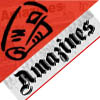Crew
Position
Launching Cosmonaut
Landing Cosmonaut
Commander
Boris Volynov
First spaceflight
Flight Engineer
Aleksei Yeliseyev
First spaceflight
None
Research Engineer
Yevgeny Khrunov
First spaceflight
None
Backup crew
Position
Launching Cosmonaut
Landing Cosmonaut
Commander
Anatoli Filipchenko
Flight Engineer
Viktor Gorbatko
None
Research Engineer
Valeri Kubasov
None
Reserve crew
Position
Launching Cosmonaut
Landing Cosmonaut
Commander
Anatoli Kuklin
Flight Engineer
Vladislav Volkov
None
Research Engineer
Pyotr Kolodin
None
Mission parameters
Mass: 6,585 kg (14,520 lb)
Perigee: 196 km (122 mi)
Apogee: 212 km (132 mi)
Inclination: 51.7
Period: 88.6 minutes
Space walk
Yeliseyev and Khrunov - EVA 1
EVA 1 Start: January 16, 1969
EVA 1 End: January 16, 01:15 UTC
Duration: 37 minutes
Mission highlights
Soyuz 5 was piloted by Commander Boris Volynov and carried flight engineers Aleksei Yeliseyev and Yevgeny Khrunov as crew to be transferred to the Soyuz 4 for reentry. The mission plan contained scientific, technical, and medical-biological research, testing of spacecraft systems and design elements, docking of piloted spacecraft, and transfer of cosmonauts from one craft to another in orbit.
Volynov remained behind on Soyuz 5, and returned to Earth in a remarkable re-entry. The service module of the Soyuz failed to separate after retrofire, but by that point it was too late to abort. While this had occurred on various Vostok and Voskhod flights, it was a much more serious problem for Volynov, as the Soyuz service module was much larger than the small retropack the earlier vehicles employed.
When the Soyuz started aerobraking in the upper reaches of the atmosphere, the combined spacecraft sought the most aerodynamically stable position - nose forward, with the heavy descent module facing directly into the air stream with only its light metal entry hatch at the front to protect it. The gaskets sealing the hatch began to burn, filling the compartment with dangerous fumes. The deceleration, while normal for reentry, pulled Volynov outward against his harness rather than against the padded seat. Fortunately, as the thermal and aerodynamic stresses on the combined craft increased, struts between the descent and service modules broke off or burned through before the hatch failed. The descent module immediately righted itself once the service module was gone, with the heat shield forward to take the brunt of re-entry.
There was one final problem in store for Volynov when the parachute cables partially tangled and the soft-landing rockets failed, resulting in a hard impact which broke his teeth. The capsule came down in the Ural Mountains 2 kilometres (1.2 mi) southwest of Kustani, near Orenburg, Russia, far short of its target landing site in Kazakhstan. The local temperature was 38 C (36.4 F), and knowing that it would be many hours before rescue teams could reach him, Volynov abandoned the capsule and walked for several kilometers to find shelter at a local peasant's house. It would be seven years until Volynov flew again, on Soyuz 21.
A similar incident occurred decades later with Soyuz TMA-11, though the latter's landing was not as rough.
EVA details
The mission had EVA objectives similar to those planned for Apollo 9. Soyuz 4 launched first, and was the active vehicle in the docking with Soyuz 5. The news agency TASS stated that: "there was a mutual mechanical coupling of the ships . . . and their electrical circuits were connected. Thus, the world first experimental cosmic station with four compartments for the crew was assembled and began functioning."
Moscow TV carried the cosmonauts' EVA preparations live. Khrunov and Yeliseyev put on their Yastreb ("hawk") suits in the Soyuz 5 orbital module with aid from Commander Boris Volynov. Yastreb suit design commenced in 1965, shortly after Alexei Leonov's difficult EVA. Leonov served as consultant for the design process, which was complete during 1966. Suit fabrication and testing occurred in 1967, but the Soyuz 1 accident in April of that year and Soyuz docking difficulties on the Soyuz 2 and Soyuz 3 missions delayed their use in space until Soyuz 4-Soyuz 5. To prevent the suit ballooning, Yastreb used a pulley-and-cable articulation system. Wide metal rings around the gray nylon canvas undersuit's upper arms served as anchors for the upper body articulation system. Yastreb had a regenerative life support system in a rectangular white metal box placed on the chest and abdomen to facilitate movement through Soyuz hatchways.
Volynov checked out Khrunov and Yeliseyev life support and communications systems before returning to the descent module, sealing the hatch, and depressurizing the orbital module. Khrunov went out first, transferring to the Soyuz 4 orbital module while the docked spacecraft were out of radio contact with the Soviet Union over South America. Yeliseyev transferred while the spacecraft were over the Soviet Union. They closed the Soyuz 4 orbital module hatch behind them, then Soyuz 4 Commander Vladimir Shatalov repressurized the orbital module and entered to help Khrunov and Yeliseyev get out of their suits. The spacewalkers delivered newspapers, letters, and telegrams printed after Shatalov lifted off to help prove that the transfer took place. Soyuz 4 and 5 separated after only 4 h 35 min together.
See also
Extra-vehicular activity
List of spacewalks
Soviet moonshot
External links
http://www.jamesoberg.com/062002flightjournalsoyuz5.html
http://astronautix.com/flights/soyuz5.htm - Encyclopedia Astronautica on Soyuz 5
References
^ "Baikonur LC1". Encyclopedia Astronautica. http://www.astronautix.com/sites/baiurlc1.htm. Retrieved 2009-03-04.
v d e
Soviet Moon-landing (N1-L3) and Moon-flyby (UR500K-L1) manned space programs
Soyuz docking tests
Soyuz 1, Soyuz 2, Soyuz 3, Soyuz 4, Soyuz 5, Soyuz 6, Soyuz 7, Soyuz 8
Zond (Soyuz 7K-L1) Lunar flyby missions
Kosmos 146, Kosmos 154, Zond 1967A, Zond 1967B, Zond 4, Zond 1968A, Zond 1968B, Zond 5, Zond 6, Zond 1969A, Zond L1S-1, Zond L1S-2, Zond 7, Zond 8, Zond 9, Zond 10
LK Lander (T2K) test missions
Kosmos 379, Kosmos 398, Kosmos 434
Hardware
N1 rocket, Proton rocket, Zond (Soyuz 7K-L1), L3: LOK (Soyuz 7K-L3) + LK Lander, Block D
v d e
Soyuz programme
Soyuz 7K-OK (19661971)
1 3 4 5 6 7 8 9
Soyuz 7K-OKS (1971)
10 11
Soyuz 7K-T (19731981)
12 13 14 15 17 18a 18 21 23 24 25 26 27 28 29 30 31 32 33 34 35 36 37 38 39 40
Soyuz 7K-TM (19741976)
16 19 22
Soyuz-T (19761986)
T-2 T-3 T-4 T-5 T-6 T-7 T-8 T-9 T-10-1 T-10 T-11 T-12 T-13 T-14 T-15
Soyuz-TM (19862003)
TM-2 TM-3 TM-4 TM-5 TM-6 TM-7 TM-8 TM-9 TM-10 TM-11 TM-12 TM-13 TM-14 TM-15 TM-16 TM-17 TM-18 TM-19 TM-20 TM-21 TM-22 TM-23 TM-24 TM-25 TM-26 TM-27 TM-28 TM-29 TM-30 TM-31 TM-32 TM-33 TM-34
Soyuz-TMA (2003)
TMA-1 TMA-2 TMA-3 TMA-4 TMA-5 TMA-6 TMA-7 TMA-8 TMA-9 TMA-10 TMA-11 TMA-12 TMA-13 TMA-14 TMA-15
Current
TMA-16 TMA-17
Planned
TMA-18 TMA-19 TMA-01M TMA-20 TMA-21 TMA-02M TMA-22 TMA-03M TMA-04M TMA-05M
Unmanned
Kosmos 133 Kosmos 140 Kosmos 186 Kosmos 188 Kosmos 212 Kosmos 213 Kosmos 238 Soyuz 2 Kosmos 379 Kosmos 396 Kosmos 398 Kosmos 434 Kosmos 496 Kosmos 573 Kosmos 613 Kosmos 638 Kosmos 656 Kosmos 670 Kosmos 672 Kosmos 772 Soyuz 20 Kosmos 869 Kosmos 1001 Kosmos 1074 Soyuz T-1 Soyuz TM-1
Categories: Manned Soyuz missions 1969 in space exploration 1969 in the Soviet UnionHidden categories: Articles lacking in-text citations from May 2008 All articles lacking in-text citations Articles containing Russian language text Articles containing non-English language text I am Mp3 Player Manufacturers writer, reports some information about bamboo fiber towel , microfiber golf towel.
Related Articles -
bamboo fiber towel, microfiber golf towel,
|



















